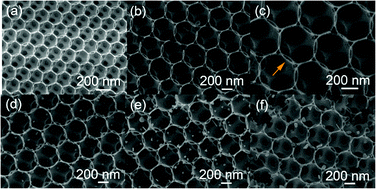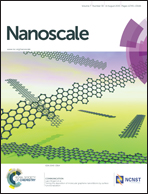Au-modified three-dimensional In2O3 inverse opals: synthesis and improved performance for acetone sensing toward diagnosis of diabetes†
Abstract
Analyzing the volatile organic compounds (VOCs) in exhaled breath effectively is crucial to medical treatment, which can provide a fast and noninvasive way to diagnose disease. Well-designed materials with controlled structures have great influence on the sensing performance. In this work, the ordered three dimensional inverse opal (3DIO) macroporous In2O3 films with additional via-hole architectures were fabricated and different amounts of gold nanoparticles (Au NPs) were loaded on the In2O3 films aiming at enhancing their electrical responses. The gas sensing to acetone toward diabetes diagnosis in exhaled breath was performed with different Au/In2O3 electrodes. Representatively, the best 3DIO Au/In2O3 sensor can detect acetone effectively at 340 °C with response of 42.4 to 5 ppm, the actual detection limit is as low as 20 ppb, and it holds a dynamic response of 11 s and a good selectivity. Moreover, clinical tests proved that the as-prepared 3DIO Au/In2O3 IO sensor could distinguish acetone biomarkers in human breath clearly. The excellent gas sensing properties of the Au/In2O3 electrodes were attributed to the “spillover effects” between Au and In2O3 and the special 3DIO structure. This work indicates that 3DIO Au/In2O3 composite is a promising electrode material for actual application in the monitoring and detection of diabetes through exhaled breath.


 Please wait while we load your content...
Please wait while we load your content...